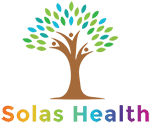
NIH Launches Harm Reduction Program to Prevent Fentanyl Overdoses
Overdoses in the United States climbed in the past few years, primarily due to the rise of fentanyl. Once only found in hospitals, the drug is now found in every state in the U.S. Unfortunately, it’s also making up the majority of overdoses. In 2020, more than 56,000 people ages 18 and older died in opioid-related incidents. In 2021, nearly 70,000 people were killed by synthetic opioid overdose, with nearly 90% of the deaths involving fentanyl. Fentanyl is killing too many people, and health authorities are clambering to slow the overdose crisis.
Six out of ten pills sold on the street are tainted by fentanyl, according to the DEA. This is why the overdose rates among all ages have gone up. Fentanyl, alongside a pandemic, still raging, is the top cause of death among ages 18 to 45, according to recent figures from the DEA. Harm reduction is a way to save lives, but government is not yet sure of which methods work best.
Fentanyl, Enforcement, and Prevention
Experts have said that the U.S. has been slow to respond to the creeping crisis caused by fentanyl. Five years ago, it may have sounded absurd to worry that a person taking a club drug or smoking marijuana could end up with fentanyl poisoning. Yet that is the real Americans who use drugs face today. Countries with lax regulations, such as China, can make fentanyl in a factory and ship it overseas as a powder legally. Once the drug reaches its destination – usually a port in Mexico, into the hands of a cartel, it is sold to dealers everywhere.
While North Carolina has a lot of trafficking, most drugs pass through to other areas. Some fentanyl dealers are arrested with pounds of fentanyl pills disguised as other drugs. Some are found with powdered fentanyl, waiting to be pressed or added to other drugs.
No matter how many fentanyl arrests there are, the drug flow keeps coming. While law enforcement seeks stiffer penalties for trafficking, the drugs end up in cocaine, Molly, marijuana, and other illicit drugs where it’s not expected.
NIH And Harm Reduction in the U.S.
The National Institutes of Health has established a research network to learn more about the benefits of harm reduction. From the research, more effective harm reduction can be focused on nationwide. NIH funding is used to research harm reduction, which focuses on preventing and reversing drug overdoses. For example, Narcan, an opioid-overdose reversal tool, is one universally accepted method of reducing harm and keeping people alive so that they can get sober one day. NIH Helping to End Addiction Long-term Initiative, or NIH HEAL Initiative, has awarded about $36 million over five years so nonprofits and participating agencies can help with the study. Researchers will track the initiatives and success rates to help decide what types of harm reduction need to be funded across the U.S.
“Getting people into treatment for substance use disorders is critical, but first, people need to survive to have that choice,” said National Institute on Drug Abuse (NIDA) Director Nora D. Volkow, M.D. “Harm reduction services acknowledge this reality by aiming to meet people where they are to improve health, prevent overdoses, save lives, and provide treatment options to individuals. Research to better understand how different harm reduction models may work in communities across the country is, therefore, crucial to address the overdose crisis strategically and effectively.”
Harm reduction typically includes rubbing alcohol, Naloxone, clean needles to prevent disease, and fentanyl testing strips to ensure that drugs are not tainted with fentanyl.
Through harm reduction, people can get sober when they are ready. The seed is planted where harm reduction advocates can share information about detox, treatment, and mental health resources.
Getting Sober from Fentanyl and Other Opioids
Medication-Assisted Treatment is considered the “gold standard” for treating opioid use disorder. Through medication and therapy, you can break free from fentanyl addiction and begin to reclaim your life. We have many different options available for people who need help. Give us a call at 919-295-7246 to learn more about our services.
If you are in need of help, please call us at: 910-295-7246 or message us.
Categories
opioids
